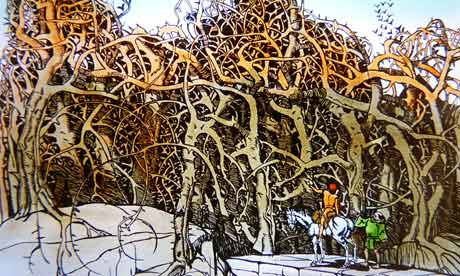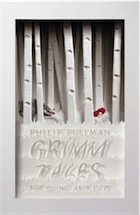The characters are conventional, the imagery obvious and there's very little description – but the stories are irresistible. Philip Pullman on rewriting fifty of his favourites

An illustration for "Sleeping Beauty', by Julius Diez, c1900. Photograph: Interfoto/Alamy
 Fed
Fed Up so long and variously by
Our age's fancy narrative concoctions,
I yearned for the kind of unseasoned telling found
In legends, fairy tales, a tone licked clean
Over the centuries by mild old tongues,
Grandam to cub, serene, anonymous
… So my narrative
Wanted to be limpid, unfragmented;
My characters, conventional stock figures
Afflicted to a minimal degree
With personality and past experience –
A witch, a hermit, innocent young lovers,
The kinds of being we recall from Grimm,
Jung, Verdi, and the commedia dell'arte.
So writes the American poet James Merrill at the opening of "The Book of Ephraim", the first part of his extraordinary long poem The Changing Light at Sandover (1982). Discussing the way in which he hopes to tell a story of his own, he singles out two of the most important characteristics of the fairy tale, as he sees it: the "serene, anonymous" voice in which it's told, and the "conventional, stock figures" who inhabit it.
When Merrill mentions "Grimm", he needs to say no more: we all know what he means. For most western readers and writers in the past two hundred years, the Kinder- und Hausmärchen (Children's and Household Tales) of the Brothers Grimm has been the fountain and origin of the western fairy tale, the greatest collection, the most widely distributed in the largest number of languages, the home of all we feel to be unique in that kind of story.
More at The Guardian

No comments:
Post a Comment